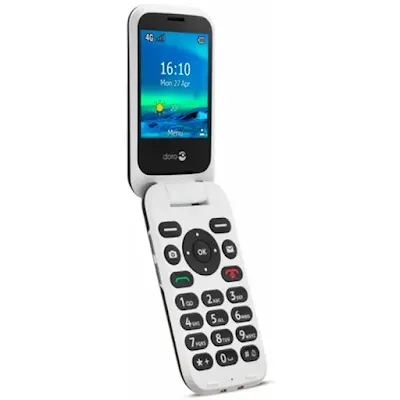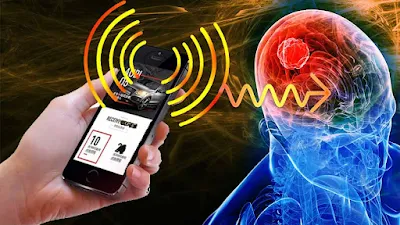Since the present technology is wholly based on wireless and mobile devices and networks, we have to make a study on the topic 'Mobile computing'. This assignment is all about the applications, challenges of 'Mobile Computing'. We are going to discuss the importance of 'mobile computing' in telecommunication technology and other fields. We are going to study the pros and cons of mobile computing field by analyzing its significance in industry and anticipating its future. We are going to examine the application of Mobile Computing in all fields like telecommunication, emergencies etc...
The assignment would give an idea about the requirements arising out of technology. It would also give a perspective on other technologies which complement this technology and about the devices which this technology. We would also discuss about the challenges mobile computing faces now as a technology and also the challenges it is going to face in near future. Elements which affect portability, major phenomenon of mobile computing are also discussed. We would talk about the strengths and development of corporate over this technology. This assignment would also look at the scope of this technology in India and abroad in technical point of view. We would also discuss about the developed protocols like Wireless Session Protocol (WSP), Wireless Transaction Protocol (WTP), Wireless Datagram Protocol (WDP) and mark-up languages like Hand-held Device Mark-up Language (HDML) and Wireless Markup Language (WML) and also about the browsers which is best complement the usage of this technology. The assignment also recommends for designing and developing suitable browsers and protocols, liberalizing licensing restrictions, making devices more user-friendly, strengthening infrastructure for high signals and improving databases for GPS technology. The assignment concludes that Mobile Computing as a technology which would transform the economic and technological system of the nation.
INTRODUCTION:
Mobile computing refers to the technology which enables transmission of data (computing) through portable devices i.e. laptops, cellular phones etc... It can be well described by the phase 'Anyplace, Anytime'. It can be used in corporations, emergencies, cellular phones, transportation, banking etc... Real estate agents can be more productive, by obtaining and gathering place and client information through mobile computing technology on web platform. People can utilize the' golden hours' efficiently in case of accident and other emergencies with the help of CDPD system. It helps marketing people to work easier since with the help of this technology they don't find it compulsory to market their products knocking the doors. Hotels can make of can easily get to know about the damaged items on a floor and they can supervise the activities of their house-keeping staff at the same time. National defense agencies can make a surveillance of what is going around in all nook and corner of the country. With the help of this system information regarding accident type, address can be obtained with much ease. Companies can hold group meetings through videoconferencing and they can access their latest market share information through mobile computing. Companies like Cisco use this technology to supervise and coordinate operations of various departments, without any authoritarian direct supervision. There is another side of this coin too.
Mobile computing has to face a number of challenges in order to deliver its service to it users effectively. Since mobile technology has to overcome distance and spaces, transmission interfaces should support the technology to function properly. Since use of grid is not possible the total power can be derived from batteries. This might be a costlier deal for us in near future. The potential health hazards out of emission frequencies of cellular transmissions, is not discovered yet. Another major concern is the security issues, which is hampered by antisocial, cracking activities. The micro features of mobile computing technology make user so uncomfortable to use it. Using micro keyboards and small screens are so hard-hitting to be brought in day to day applications. The prolonged waiting time due to large accessories and process.
Some of the requirements arising out of this technology:
i) Examining availabilities of networks and selecting them.
ii) Comparing quality and cost parameters.
iii) Copying data on your device.
iv) Encrypting and authenticating.
v) Figuring out resources in external environment.
vi) Accounting the usage cost.
vii) Coping with trends.
The technology encompasses a number of handheld devices for e.g.: laptops, PDA's etc...
Laptops: It's similar to desktop but mainly used for mobile use.
PDA's: It is a hand-held device used for multipurpose such as computing, telephone, internet and networking. Cellular phones: these are the electronic instruments which enable personnel to perform voice and data communication.
Technologies that constitute to mobile computing:
1) Bluetooth: This technology enable users to communicate wirelessly with their digital device through radio frequency waves.
2) Global Positioning System (GPS): It is a technology, which provides three dimensional positing specially, developed for navigation and surveying purposes.
3) General Pocket Radio System (GPRS): This technology allows transmission of information across a cellular network.
4) Wireless Application Protocol (WAP): It enables the access of internet through handheld deices such as mobile phones, PDA etc...
5) Kilobyte Virtual Machine (KVM): It is a light version of JVK which enables the access of single application to be used by different platforms wireless.
6) WLAN: Connecting mobile devices to allow the transmission of data and information within the formed network.
7) Specialized Mobile Radio (SMR): it is a two-way radio system which helps in combining more than one receiver with one repeater.
8) Infrared: communicating very a short range through mobile devices with the help of waves of wavelength in the range of 700nm-1mm.
Elements which affect portability:
1) Operating temperature range: Temperature swings of -20F to 140F range while travelling affects the effectiveness of this technology. To overcome this barrier, fan coolers and heaters are designed to bring the temperature range to 95F-100F.
2) Vibration: Vibrations made by vehicles reduce the life span of computer components especially hard drives.
3) Intensity of light: High intensity of sunlight makes readability too tough.
4) Temperature affects battery power: Lithium batteries perform ineffective to given charging at high temperature. It limits its performance to less than 85%.
5) Touch screens: while working with gloves you can access the system by using the screen.
SCOPE OF STUDY:
The strengths of this technology in near future are going to be the progression in artificial intelligence, compact IC's and high processor speeds. Using 'Artificial Intelligence' for secretarial jobs would be more productive in this 'information age'. Working lifestyle will vary a lot and a flat hierarchical workplace can be built. The future of this technology lies in the hands of the developers, their ability to meet customer needs are most significant. Blue-chip giants like Microsoft and Intel are showing constant innovation to meet their customer's needs. Development of more compatible protocols like Wireless Session Protocol (WSP), Wireless Transaction Protocol (WTP), Wireless Datagram Protocol (WDP) for WAP applications and markup languages like Hand-held Device Mark-up Language (HDML) and Wireless Markup Language (WML) assures high feasibility of its emergence. Now mobiles come with embedded UP. Browser designed minibrowsers to facilitate one to access this technology.
Development of Wimax resulting in obtaining of increased speed of connection and high ease of usage assures the technology's uphill. The upcoming facilities such as the 'Interactive Television' and the 'Video Image Compression' which this technology is going to offer, means pushing mobility to homes, for e.g. home shopping international players have started entering the market, which implies more competition between players and high growth of this technology in India. Development of processors with unmitigated mobility and high capability by Intel assures the bright future of mobile computing. Intel comes up with wimax technology, which operates beyond the limitation of Wi-Fi technology and energy efficient mobile devices which promises a good scope for this technology. Though much challenges 'Mobile Computing', has to face in near future with innovation as strength the technology can come up successfully. The upcoming 4g technology marks the beginning of the rising sun. In future we can see Smartphone and iphones flooding the markets.
RECOMMENDATIONS:
1) Much suitable internet protocols, browsers and mark-up languages should be developed to enhance applicability of mobile computing. In future all cellular phones and mobile devices should be embedded with browsers which supports wireless technology and much compatible protocols and mark up languages must be developed.
2) The infrastructure should be strengthened enough to provide high bandwidth signals thus enabling high mobility. High power servers should be built.
3) The devices could be made more easily used by people. For e.g. standard keyboard for mobile phones, screens with more visibility etc...
4) Licensing for access of technologies related to mobile computing should be made liberal to enable corporate to derive maximum benefits. International players should be allowed freely into the markets
5) Databases should be developed and maximum benefits of GSM technology should be attained.
CONCLUSIONS:
Mobile computing is a significant, sprouting technology. It helps mobile personnel to communicate and interact quicker and easier with the help of a fixed information system and it helps to overcome constraints of geographic location. Mobile computing uses the hardware, software, and technology for interaction and to carry out its other operations. Mobile computing is a flexible and strategic technology that enhances the quality of information provided, accessibility to data, increased operational efficiency, and helps to achieve management effectiveness in an organization.
This technology would be the trend setter for the technological world in future. Although it has to face challenges of low bandwidth, problems with security, poor infrastructure and also some of the inherited problems like small display screen, low durability of batteries etc... By the result of strength and weakness analysis we can conclude that mobile technology is going to transform the whole of our economic and technological system.







